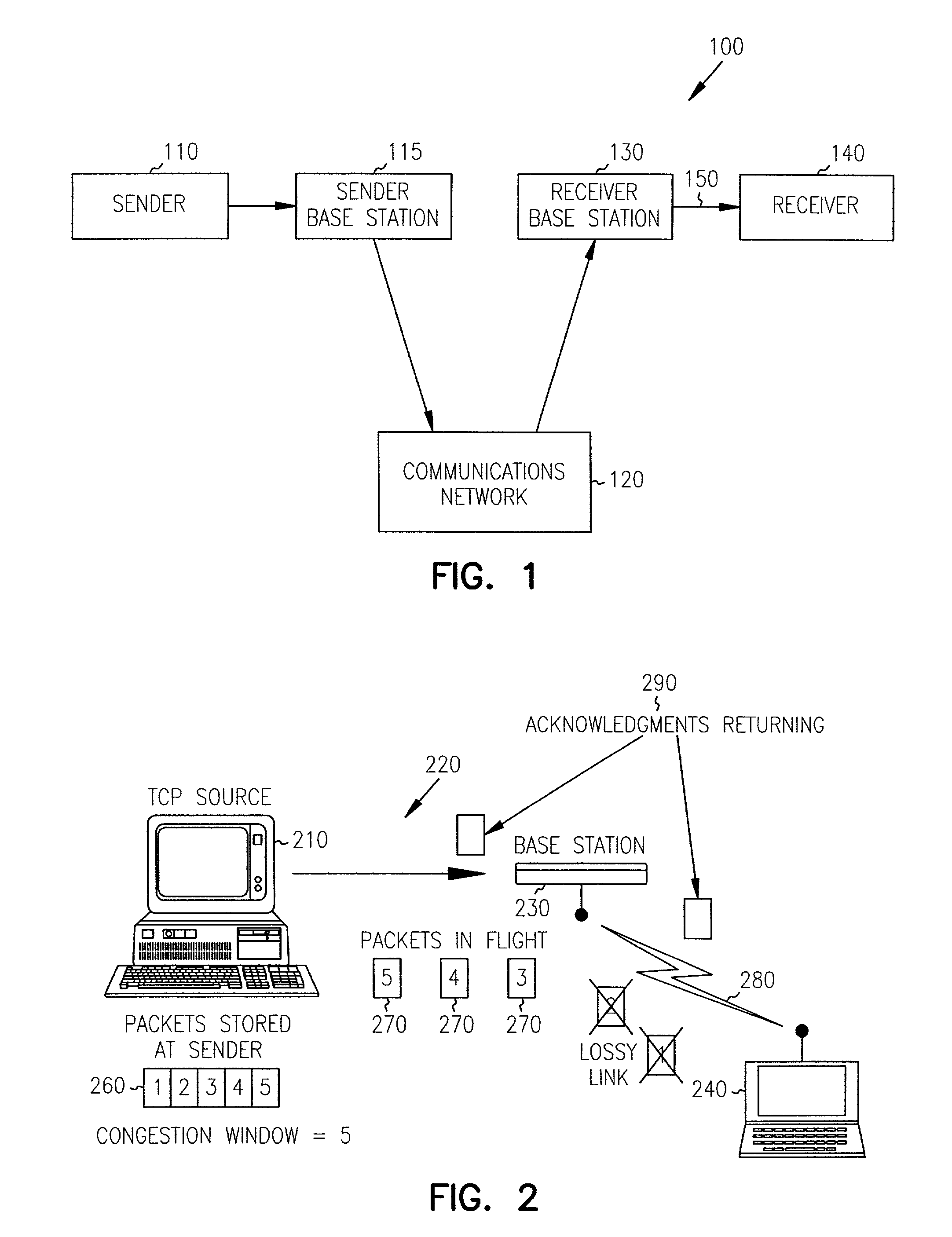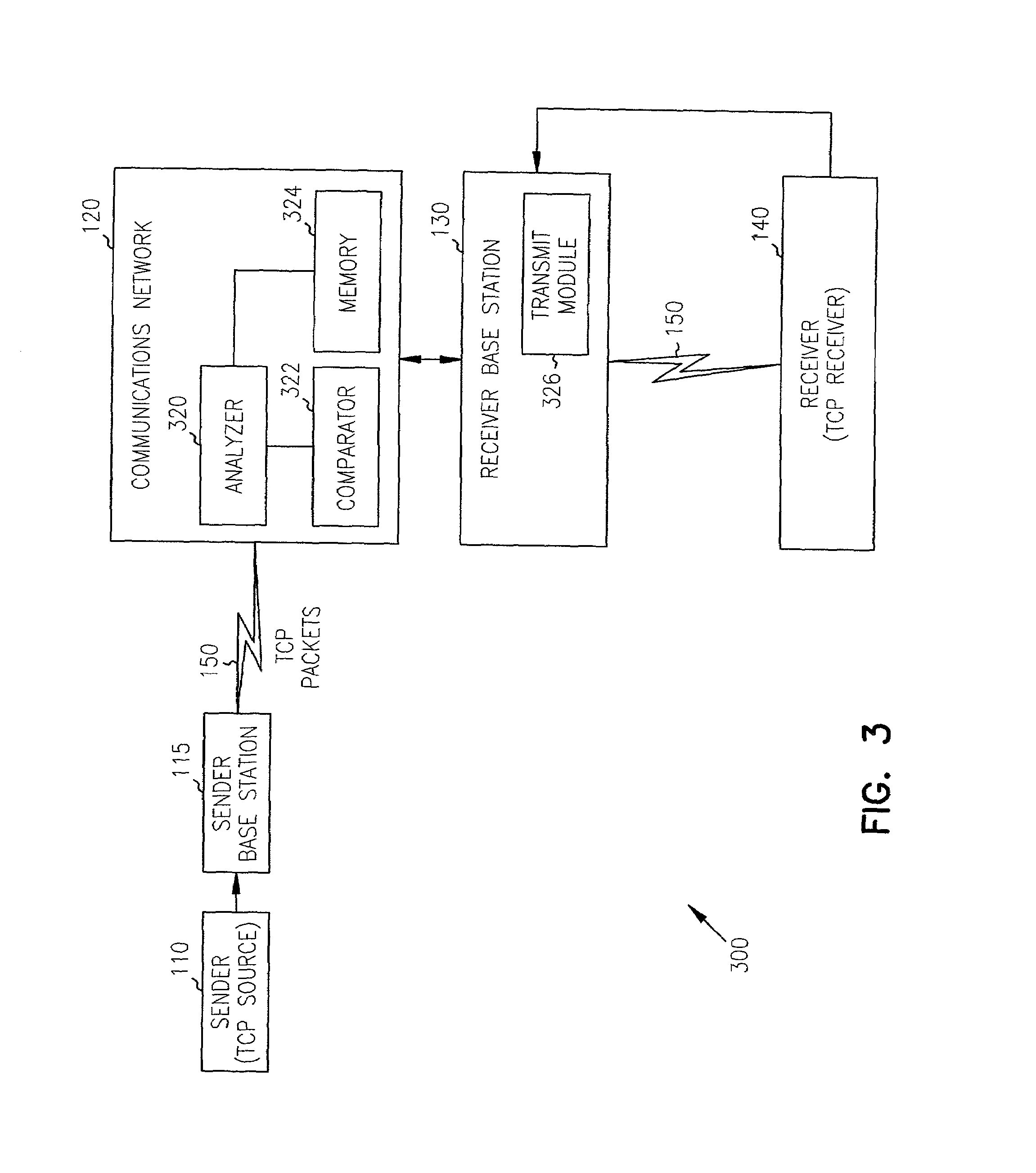Technique for improving transmission control protocol performance in lossy networks
a technology of transmission control protocol and lossy network, which is applied in the field of transport protocol for communication networks with lossy links, can solve problems such as packet loss, congestion, and packet loss of received packets
- Summary
- Abstract
- Description
- Claims
- Application Information
AI Technical Summary
Benefits of technology
Problems solved by technology
Method used
Image
Examples
Embodiment Construction
[0017]The present invention provides improved Transport Protocol such as Transmission Control Protocol (TCP) performance in lossy networks, such as wireless communication networks, which is computationally efficient and practical to implement.
[0018]FIG. 1 shows a communication system according to an embodiment of the present invention. Sender 110 is connected to a sender base station 115, which is connected to a communication network 120. The communication network 120 is connected to receive a base station 130. The receiver base station 130 is connected to receiver 140 over a lossy link150. The lossy link 150 is a link where transmission losses are primarily due to interference, rather than congestion, such as a wireless link. Sender 110 and receiver 140 transmit and receive information through communication network 120, respectively, through the receiver base station 130 and over the lossy link 150. The term ‘information’ includes data, text, voice, video, and other such informatio...
PUM
 Login to View More
Login to View More Abstract
Description
Claims
Application Information
 Login to View More
Login to View More - R&D
- Intellectual Property
- Life Sciences
- Materials
- Tech Scout
- Unparalleled Data Quality
- Higher Quality Content
- 60% Fewer Hallucinations
Browse by: Latest US Patents, China's latest patents, Technical Efficacy Thesaurus, Application Domain, Technology Topic, Popular Technical Reports.
© 2025 PatSnap. All rights reserved.Legal|Privacy policy|Modern Slavery Act Transparency Statement|Sitemap|About US| Contact US: help@patsnap.com



